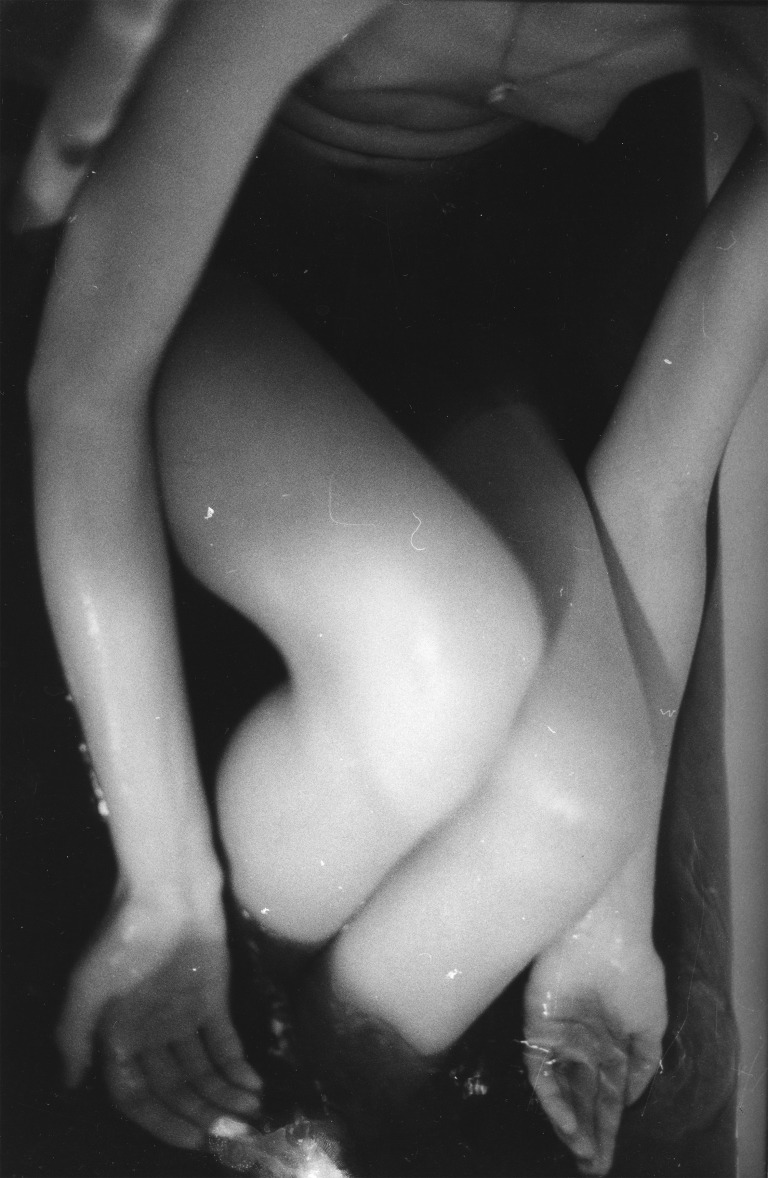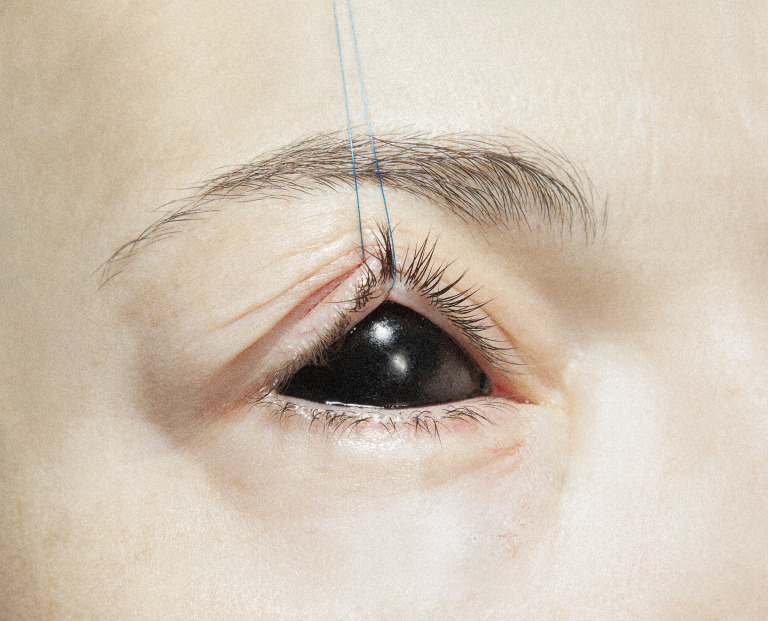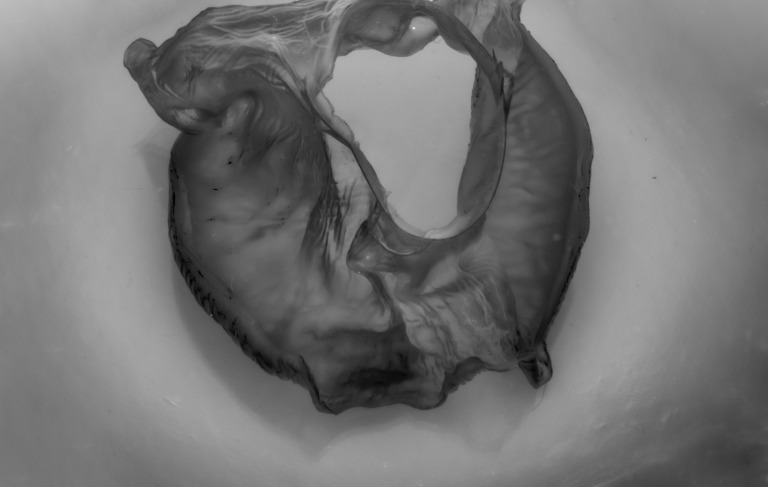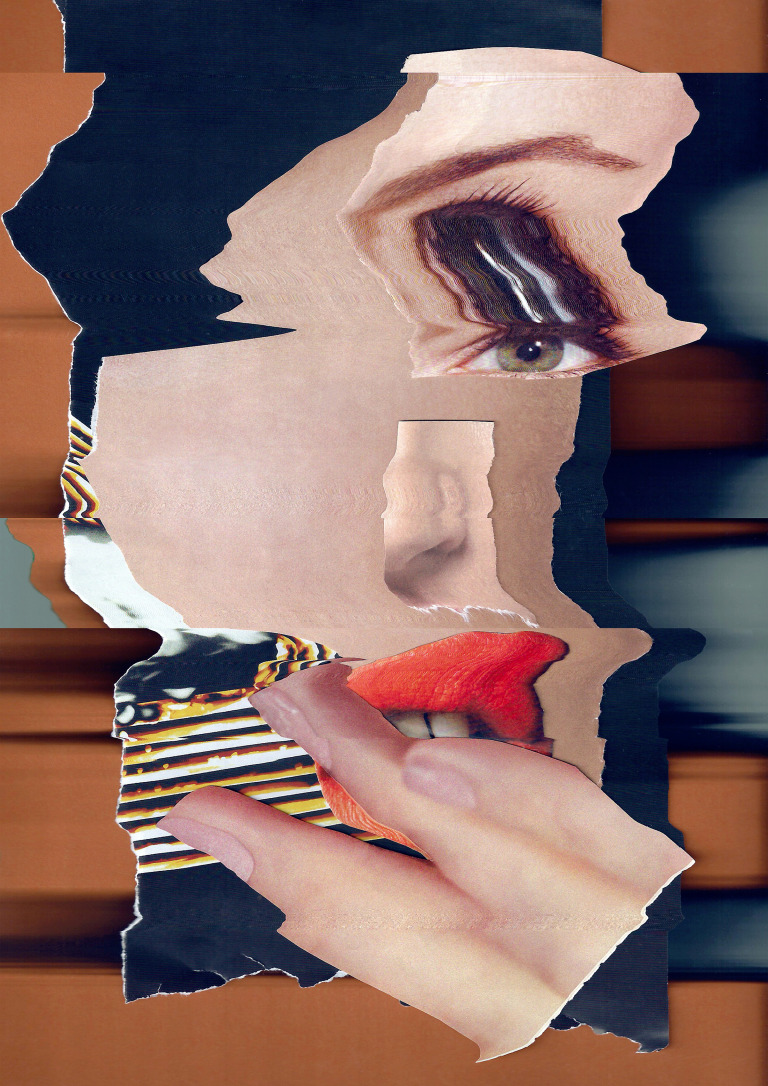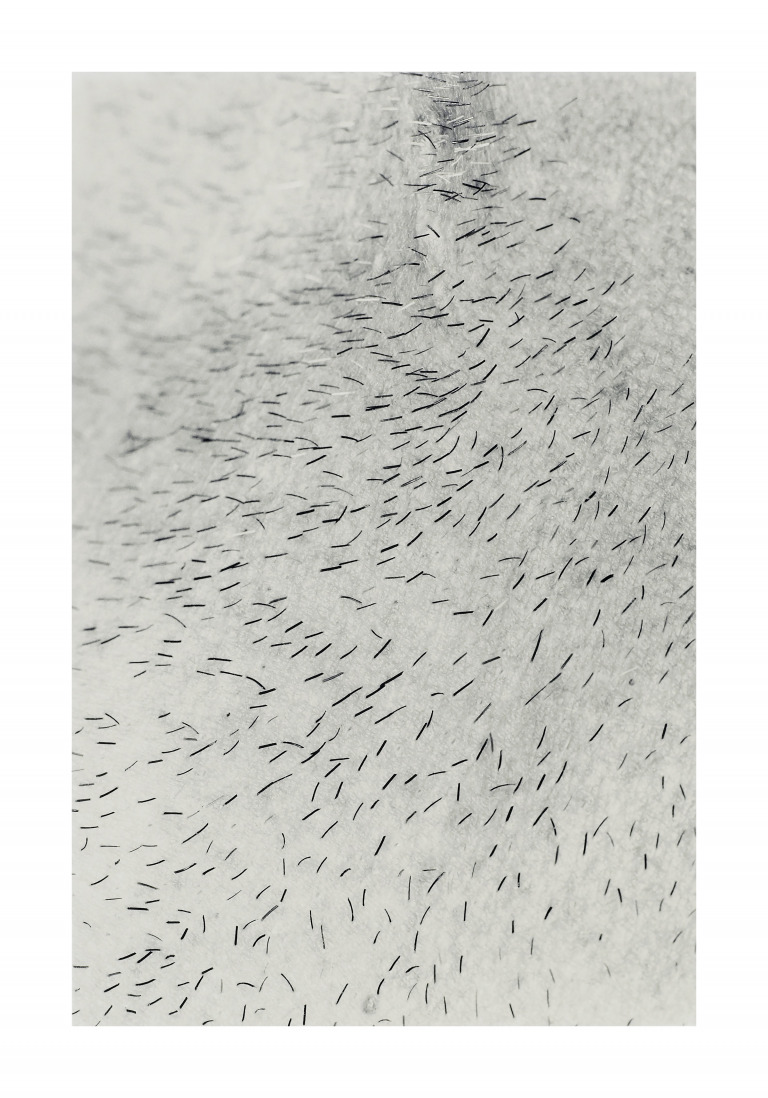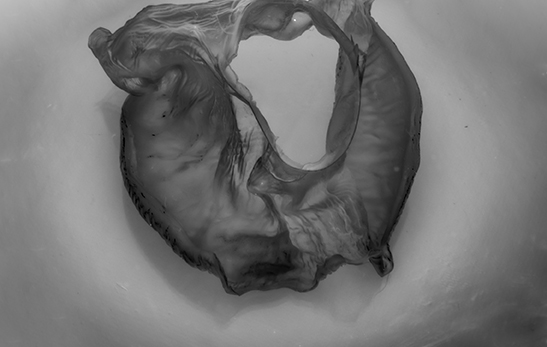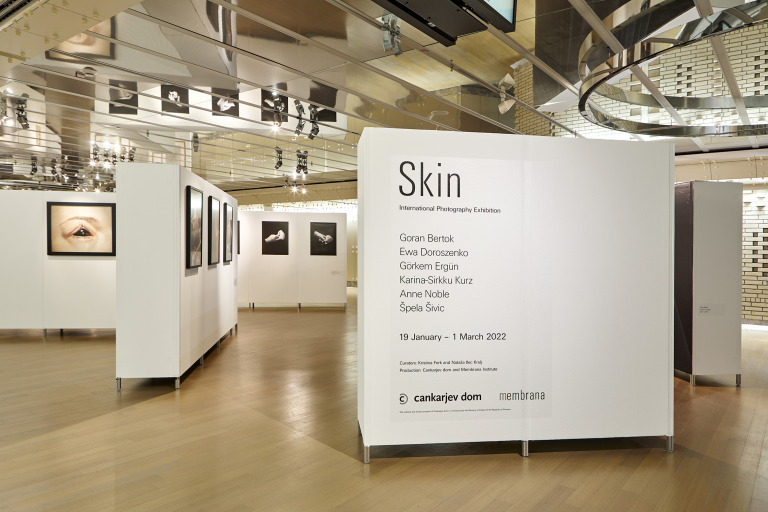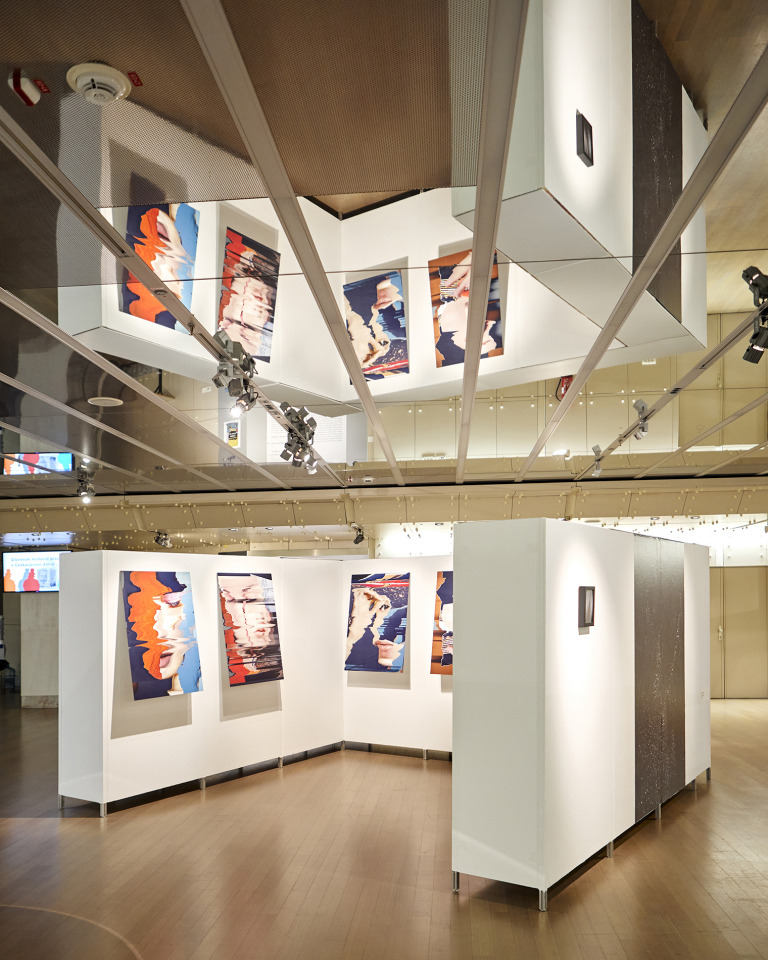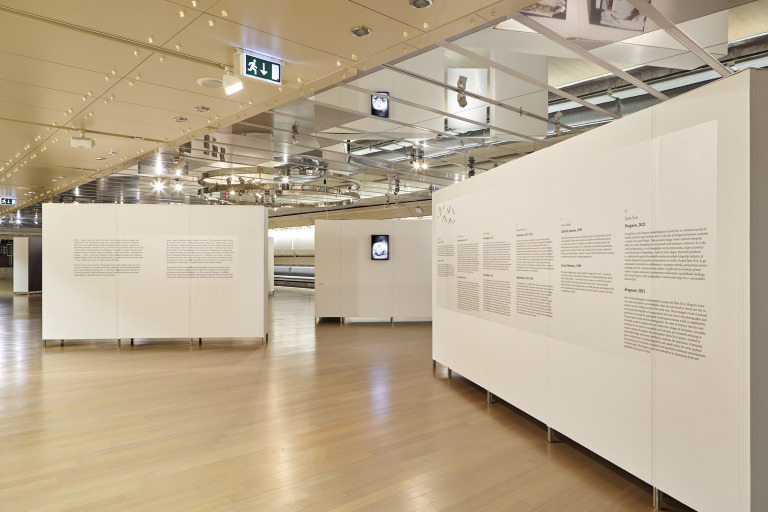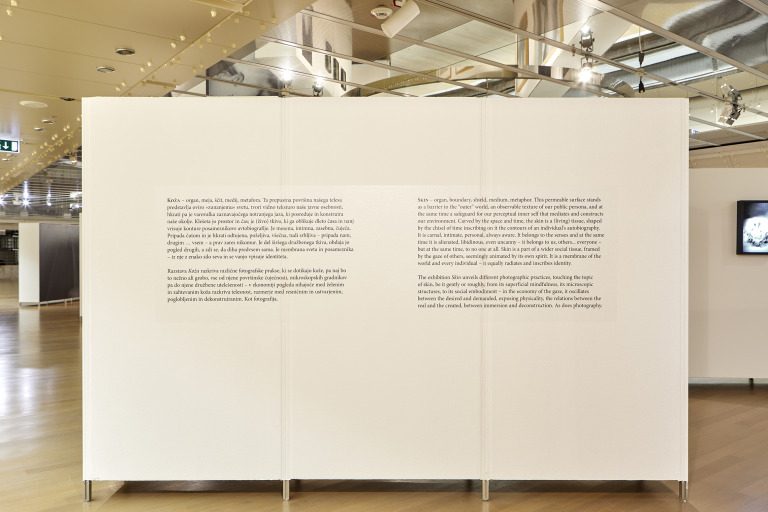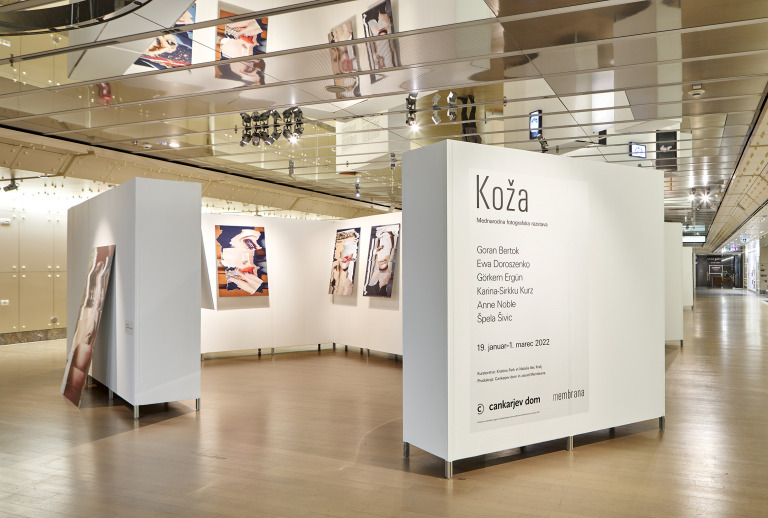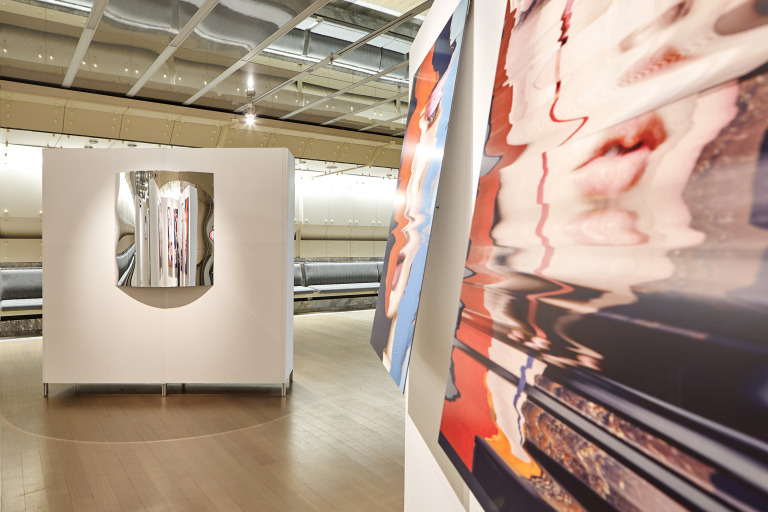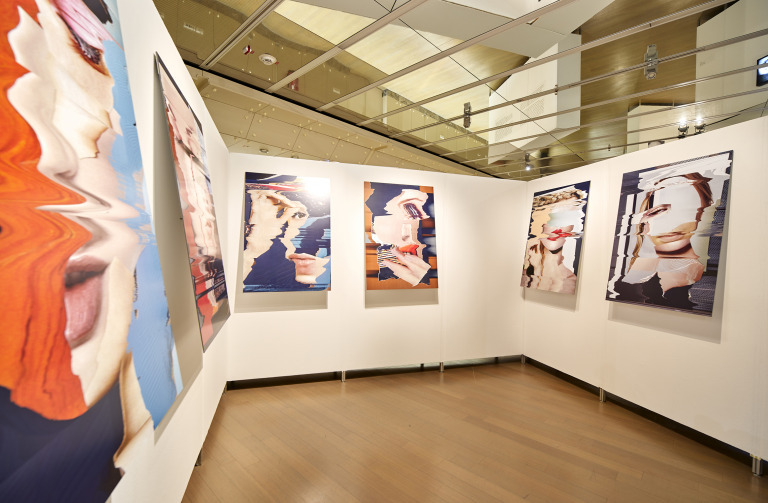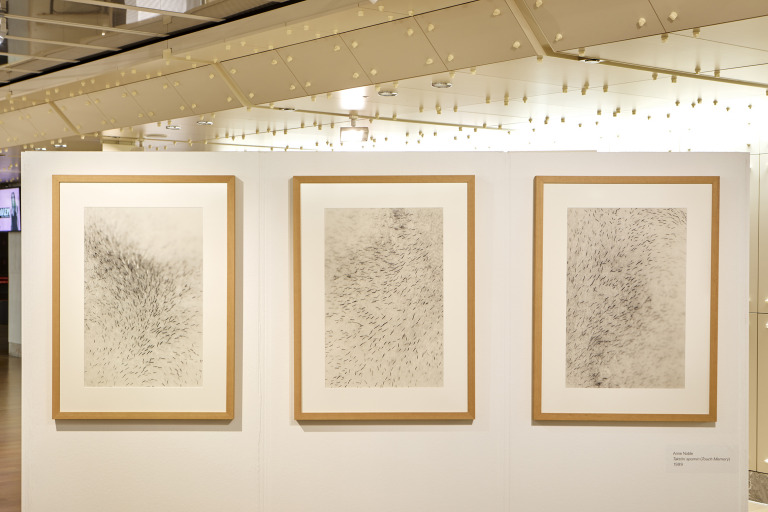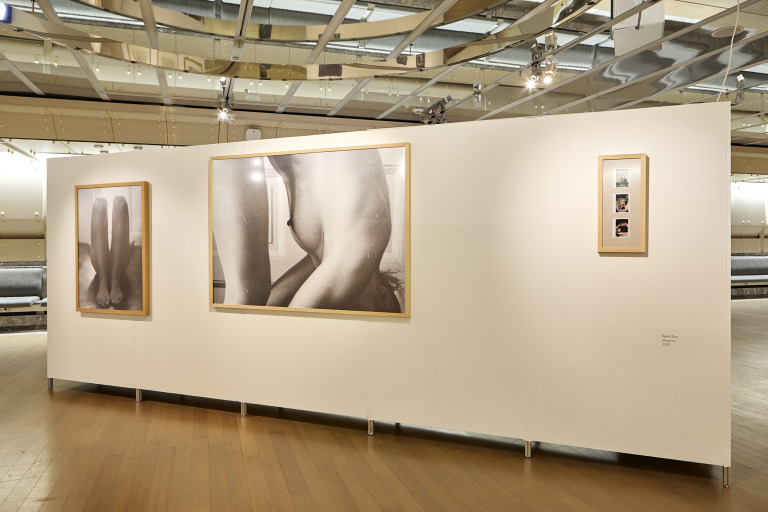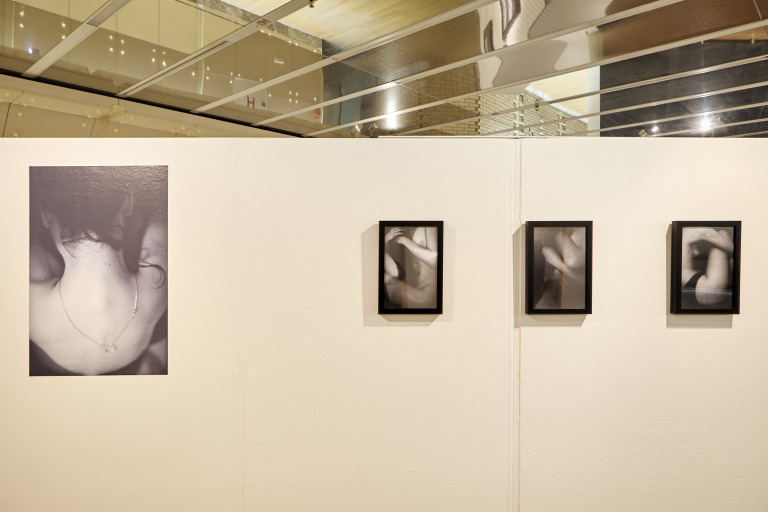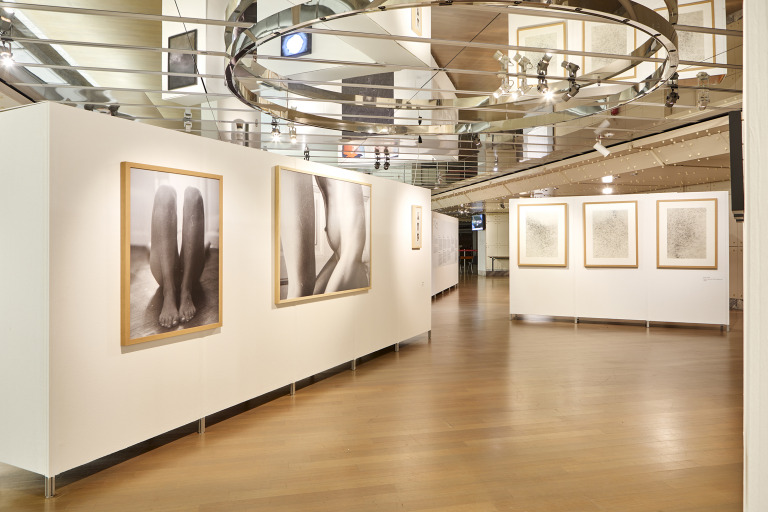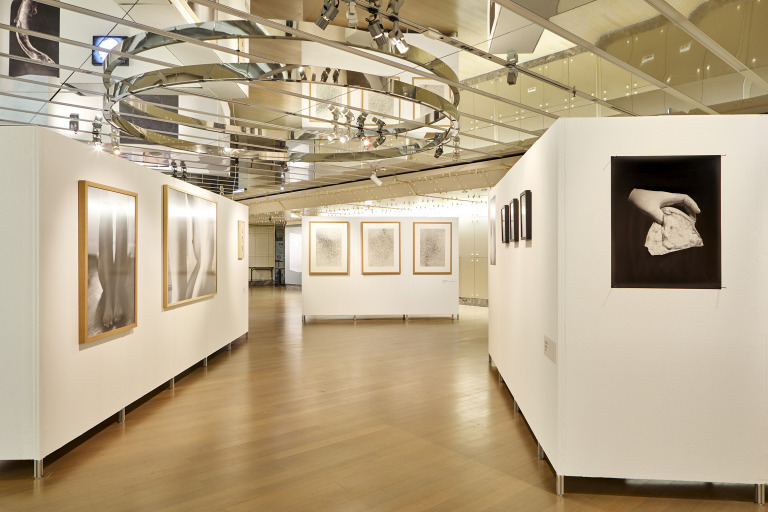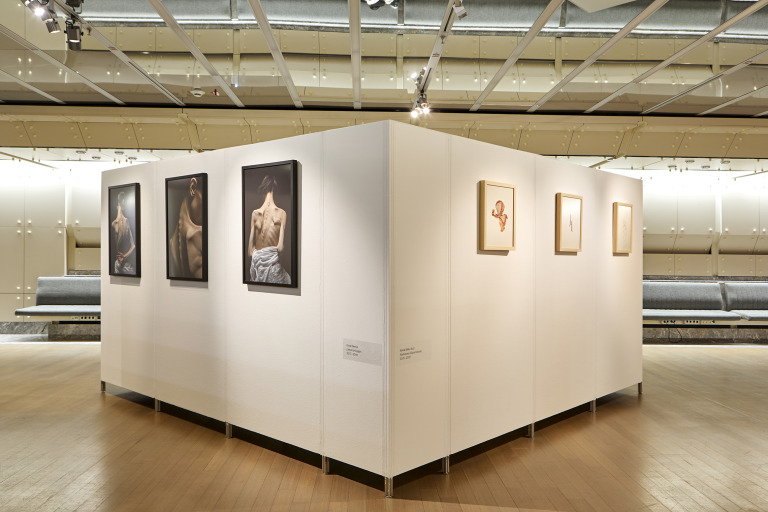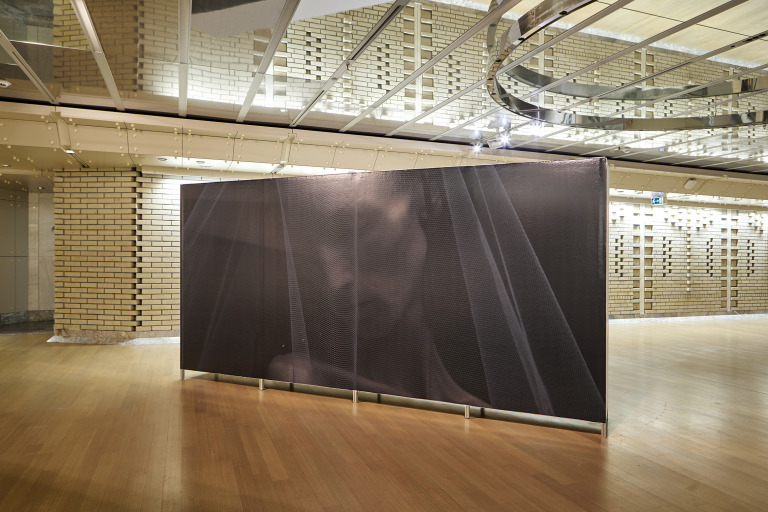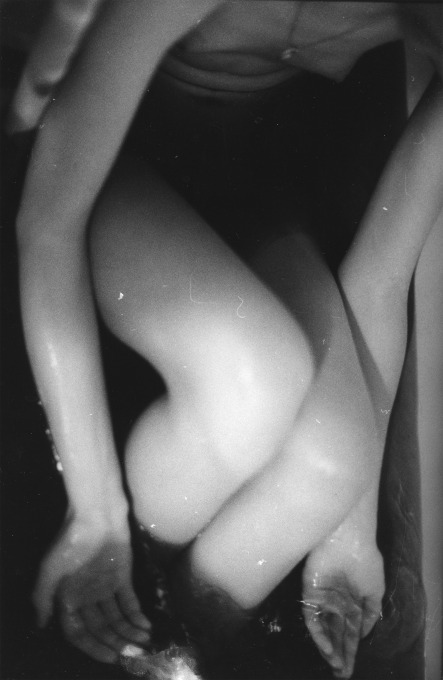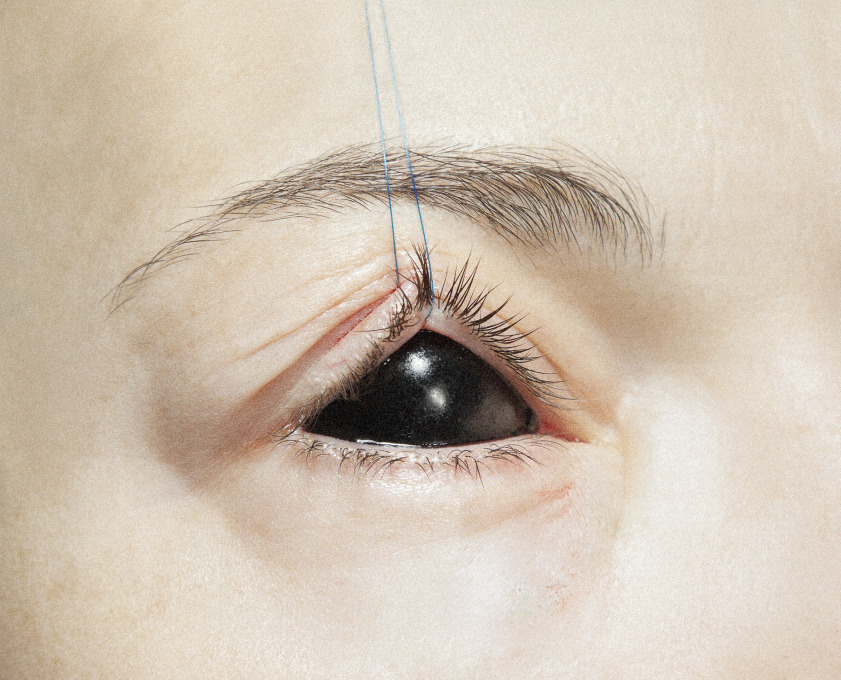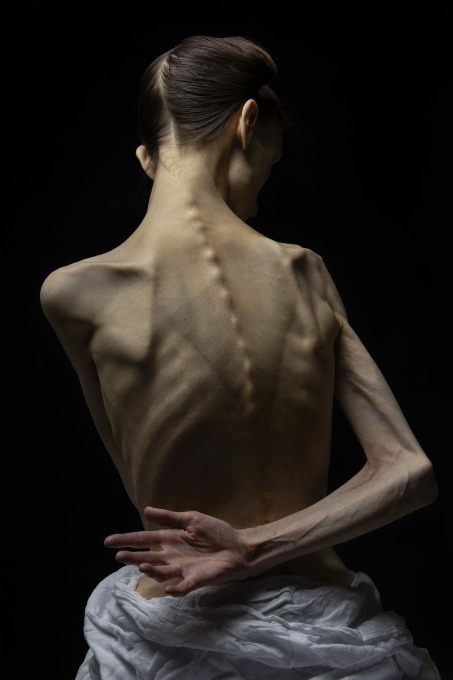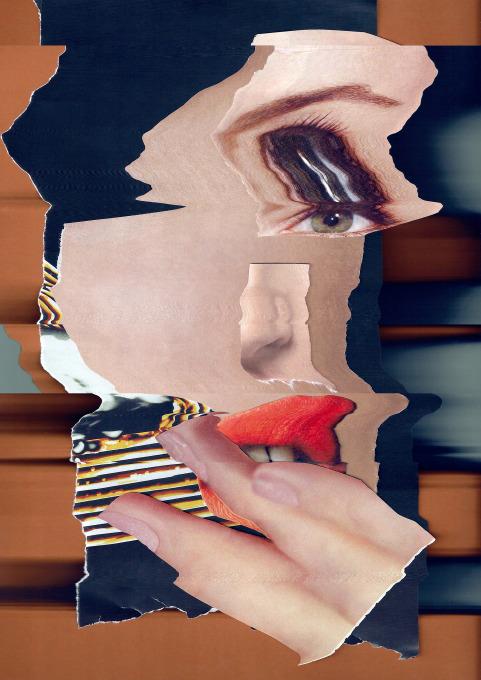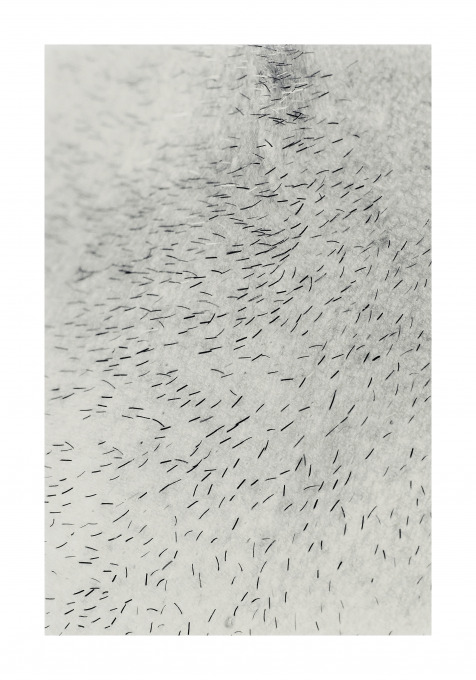Skin – organ, boundary, shield, medium, metaphor. This permeable surface stands as a barrier to the “outer” world, an observable texture of our public persona, and at the same time a safeguard for our perceptual inner self that mediates and constructs our environment. Carved by the space and time, the skin is a (living) tissue, shaped by the chisel of time inscribing on it the contours of an individual’s autobiography. It is carnal, intimate, personal, always aware. It belongs to the senses and at the same time it is alienated, libidinous, even uncanny – it belongs to us, others… everyone – but at the same time, to no one at all. Skin is a part of a wider social tissue, framed by the gaze of others, seemingly animated by its own spirit. It is a membrane of the world and every individual – it equally radiates and inscribes identity.
The exhibition Skin unveils different photographic practices, touching the topic of skin, be it gently or roughly, from its superficial mindfulness, its microscopic structures, to its social embodiment – in the economy of the gaze, it oscillates between the desired and demanded, exposing physicality, the relations between the real and the created, between immersion and deconstruction. As does photography.
Ewa Doroszenko: Radical Beauty, 2021
The boundaries between the physical and the digital are blurred. In online reality, the desire for beauty is just as strong as in “real” life. Presenting an attractive version of ourselves becomes our daily goal, in achieving which we are ready to use all possible, even radical digital tricks. Thanks to advanced online tools we can freely model our face, correct our jawline, reduce our eyebrows, edit the shape of our nose, enlarge our eyes, raise our cheekbones, or transform specific areas of our facial image. During the development of the project, I wondered whether the digital game of manipulating one’s own image could be pleasant and innocent. Perhaps digitally edited pictures can serve as aspirational fantasies, and have a positive impact even as the product of joyful entertainment. Thanks to contemporary media, we as women can finally reclaim our image. By experimenting, having fun, and making mistakes, we can create a new aesthetic that opens up the possibility of replacing the images of women that have functioned so far. An aesthetic that in time will overwrite the female images that existed in a patriarchal culture.
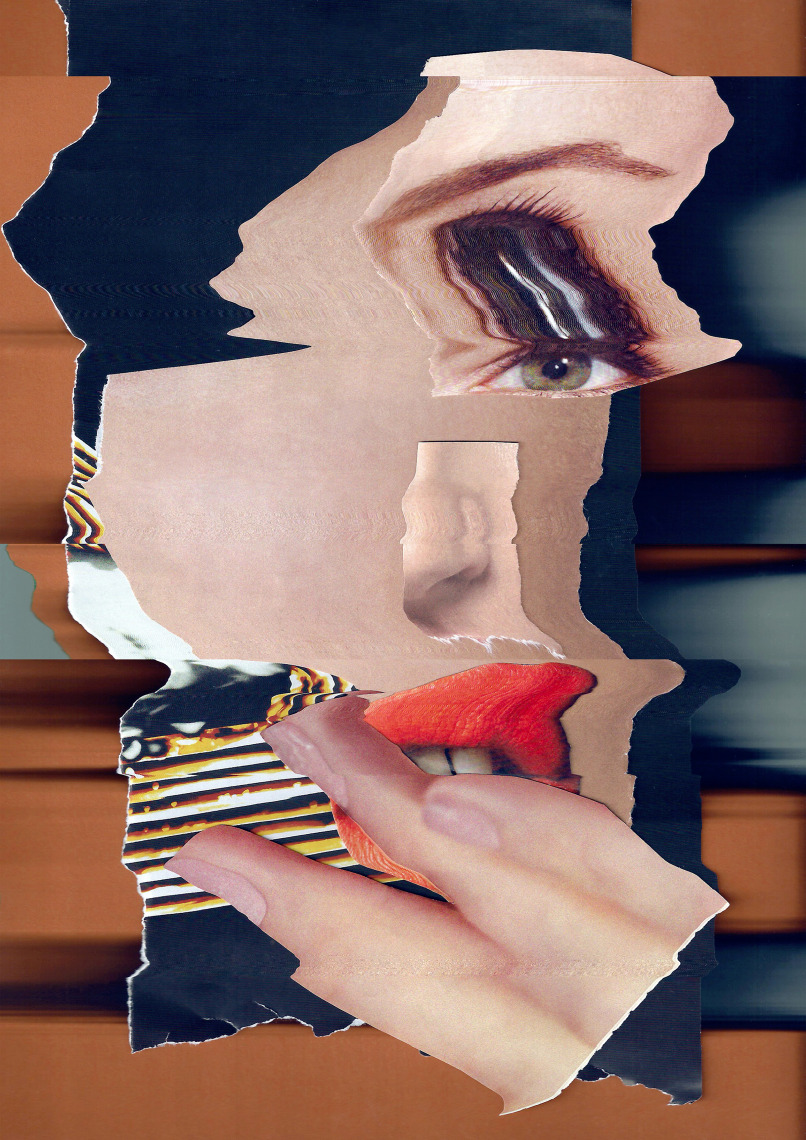
Görkem Ergün: Phase:Repair, 2021
The underlying question: How do man and his nature change? In response, my purpose is to reconfigure the human body, its limbs and organs as a focal point using lens-based media. In the process I investigate the limits of various materials, transforming and coalescing them, making use of technological developments, particularly in the field of biology. My approach to this project was an experiment where the process itself was the determinant. I based my work on the assumption that the physical characteristics of human beings that render them human could be the starting point of the response to my initial question, continuing with the hybridism resulting from their transformation, or in my opinion, their reparation, with the redesign and synthesis of materials and body parts. As always, the termination of the process was made possible by use of photography and video: they facilitate the building of a mutual language, while concurrently they can be misleading regarding time, space and scale, producing only a vague and possibly deceptive meaning, bringing to the forefront a feeling of remaining ‘in-between’.

Karina-Sirkku Kurz: Supernature, 2015–2019
The photographic work in SUPERNATURE centres on the concept of the body as a malleable, sculptural entity. In this manner, aesthetic plastic surgery serves as an important context—a highly invasive practice, which revolves around designing and restructuring one’s physical appearance according to specific visual ideals. How does reshaping the appearance of the body affect one’s self-image? Additionally, how are these corporal interventions – that indelibly alter internal tissue, membrane, and flesh – experienced? In her approach the artist elicits concepts from the book Our Strange Body (2014) by Dutch philosopher Jenny Slatman. At the intersection of medicine and humanities Slatman argues that “… what we call our own body entails a strange dimension. Precisely because of this element of strangeness in our own body, we are capable of incorporating strange-ness and adjusting to radical physical changes.”
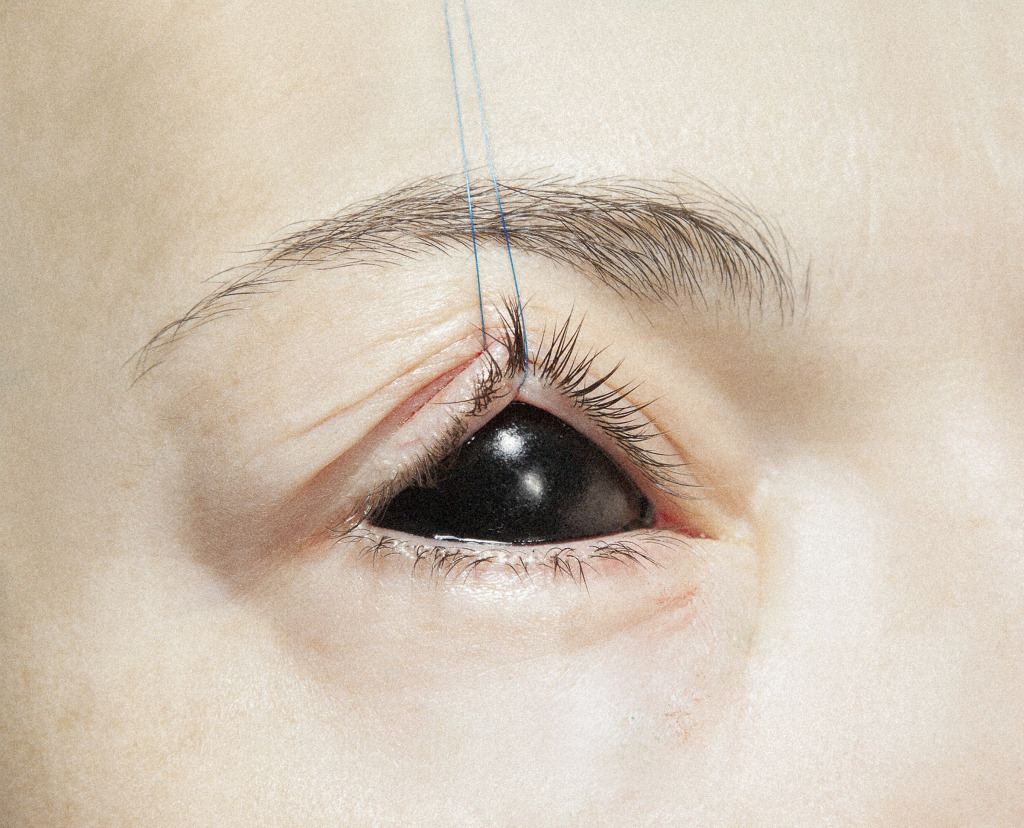
Anne Noble: Touch Memory, 1999
This suite of images invites recall of memories triggered by touch – but also by scent and by scenario. The title riffs of the name of a digital identification device called a touch memory – a process by which a memory is created and accessed when an electronic touch probe comes into contact with a memory button. Likewise human contact through touch can be both physically and metaphorically electric especially when combined with scent. Touch Memory points to the thrill and significance of touch.

Goran Bertok: Hunger (Lakota), 2017–2019
The Hunger series examines the body emaciated through an eating disorder, anorexia. The scenes reminiscent of World War II concentration camps, or of images of death showing starvation somewhere in the Third World, are all the more disturbing because they unfold before our very eyes, in a society of plenty, largely featuring young people. Can this seemingly voluntary refusal of food leading to extreme debility and even death serve as an indicator of covert violence, including the violence that society inflicts on an individual?
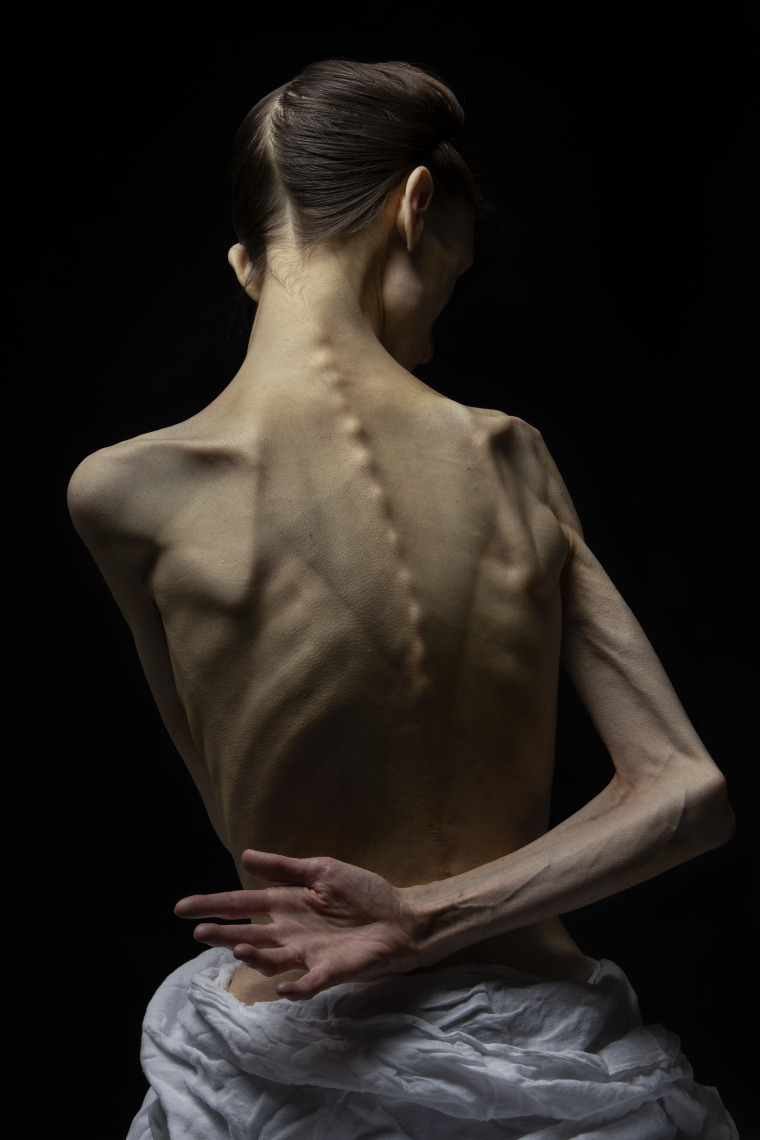
Špela Šivic: Brugnon, 2021
Most of the photographs comprising the young artist Špela Šivic’s Brugnon series were taken during last year’s lockdown, when she was forced to retreat one way or another into the intimate world of her loved ones. Thus emerged a book of sensual and intimate photographs of young women who are close to the photographer and posed for her during the quarantine. Featuring an intimate world co-inhabited by the portrayed women and the photographer, the sense of intimacy that the nude invariably entails is heightened even further here. Images of nectarines, invariably serving as an evocation of sensuality and eroticism, are constantly surfacing in various contexts throughout the photographs. Špela Šivic’s project, marked by minimalist design and dreamy aesthetics, examines the importance of personal space. Furthermore, in juxtaposing fruits and naked bodies, the series explores the importance of eroticism in visual art and questions traditional representations of female nude. The Brugnon series was featured in an eponymous book self-published by the artist in 2021.

Ewa Doroszenko (1983) is a Warsaw-based intermedia artist. She earned her doctorate in fine arts from the Nicolaus Copernicus University in Toruń. Her artistic practice is characterized by an unconventional use of digital manipulation, together with the classic photographic medium and traditional painting. Ewa Doroszenko is a winner of international competitions, including Fait Gallery Preview (2016), DEBUTS – doc! photo magazine (2018), Debut – Lithuanian Photographers Association (2018), scholarship holder of the Ministry of Culture and National Heritage of the Republic of Poland (2019), the City of Toruń in the field of culture (2013 and 2011), and recipient of many international residency programs. She is also a finalist of the Noorderlicht International Photo Festival (2021), Kranj Foto Fest (2021), FIF-BH – International Festival of Photography of Belo Horizonte (2020), Athens Digital Arts Festival (2020), Landskrona Foto Festival (2018), FILE Electronic Language International Festival Sao Paulo (2015), ISEA International Symposium on Electronic Art Vancouver (2015), GENERATE! Festival for Electronic Arts (2015). Her works have been shown, among others, at the Center for Contemporary Art in Torun, Vilnius Photography Gallery, MAH – Museum of Angra do Heroismo, Propaganda in Warsaw, Fait Gallery in Brno, Kasia Michalski Gallery in Warsaw, Exgirlfriend Gallery in Berlin.
Görkem Ergün (1981) is an artist and also works in a photography archive in İstanbul. In his lens-based works, Ergün focuses on the relations between culture, design and violence with a body-centered point of view. Scientific developments, new technologies, great destructions and rituals make it possible to create new meanings about the consequences of focused relationships and how these relationships can be transformed. His works have been exhibited in various galleries, museums and showcases.
Karina-Sirkku Kurz is a Finnish-German photographer and visual artist currently based in Berlin. She studied in Bremen, Lahti and Helsinki where she graduated with a master’s degree from the Department of Photography at Aalto University School of Arts, Design and Architecture. Kurz’s work UNGLEICHGEWICHT (Imbalance) has won and been nominated for several prizes. The book of the same name won the Nordic Dummy Award in 2015 and was then published by Kehrer Verlag. In 2017, UNGLEICHGEWICHT was honored with the Finnish Photobook Award, organized by the Association of Photographic Artists and The Finnish Museum of Photography. Photographer Alec Soth chose the winner. Kurz is a member of the Union of Artist Photographers in Finland and Deutsche Fotografische Akademie. She received several grants, among others, from Haus am Kleistpark in Berlin, the Finnish Cultural Foundation, The Arts Promotion Centre Finland, FRAME Contemporary Art Finland, Norwegian Arts Council and The Swedish Cultural Foundation in Finland. Kurz’s works can be found in the Finnish State Art Collection, the Collection of “The Finnish Museum of Photography” and in private collections.
Anne Lysbeth Noble (1954) is one of Aotearoa New Zealand’s most widely respected contemporary photographers who has been at the forefront of photographic practice in New Zealand since the early 1980s. Creating bodies of work that mark sustained engagement with particular places, sites, histories, issues and more recently species, her images are known for their beauty, complexity and conceptual rigour and for their persistent inquiry into the ways we perceive and come to understand the natural world. Anne Noble is Distinguished Professor of Fine Arts (Photography) at Massey University, Wellington, and the recipient of numerous awards including the 31st Higashikawa Overseas Photographer Award (2015), a Fulbright Fellowship at Columbia College, Chicago (2014), a New Zealand Arts Foundation Laureate Award (2009) and US National Science Foundation Artists and Writers Award (2008). She has exhibited widely both nationally and internationally and her work is held in collections throughout the world.
Goran Bertok (1963) studied journalism and comparative literature and graduated in 1989 in journalism from the Faculty of Sociology, Political Science and Journalism – FSPN (now Faculty of Social Sciences – FDV). In 1990, the central motif of his first solo exhibition held at the ŠKUC Gallery was the human body bearing signs of physical violence. In subsequent series, Bertok explored the transitions between all stages of violence; from make-believe violence, intentional harm done to one’s own body and/or the other’s body to the organised violence that society inflicts on the body of an individual, culminating in physical death and complete destruction of the body.
Špela Šivic (1998) is a young Slovenian photographer. While attending the Faculty of Applied Sciences – VIST in Ljubljana, she expanded her knowledge of photochemistry and various darkroom processes with photographer Peter Fettich who has been member of the Kela collective over the past year. She decided to spend her third academic year in Bari, at the Accademia di Belle Arti di Bari. She uses the analogue technique and occasionally complements her works with other means of artistic expression, thus exploring in terms of both content and form how to render the moment that occurs in front of the camera in its final form as genuinely as possible. Her first photography book, Brugnon, came out in February 2021. Last September Špela Šivic and Jaka Mojškerc held the exhibition MOMCI and some other or less related things.
Nataša Ilec Kralj (1992) earned her MA at Academy of Fine Arts in Ljubljana in the field of photography and her BA at VIST Ljubljana – Department of photography. She takes interest in theoretical and philosophical aspects of the photographic medium and has also participated in a few group exhibitions (πr2 – contemporary cinetic ceramics: Layerjeva hiša, Kranj, 2021; Cyanotypical: Ljubljana, 2019; Svaka čast: Ljubljana, 2019; Create a work which is not yours: Ljubljana, 2019; FUGA – UL ALUO+FA: Ljubljana, 2019; Stičišče: Ljubljana, 2019; 25 Images: Berlin, 2017; ISO0: Photonic Moments, Ljubljana, 2016; Flâneur: Ljubljana, 2015; Overlook: Photonic Moments, Ljubljana, 2014; NovaF: Maribor, 2013). Ilec Kralj curated her first exhibition, Mejniki, in 2017. She has been collaborating, contributing and translating for Membrana since 2017. Her free time passion is bookbinding.
Kristina Ferk (1992) studied History of Art and Latin Language, Literature and Culture at the Faculty of Arts in Ljubljana. In 2020, she graduated from the School of Curatorial Practices and Critical Writing World of Art. As part of this course, she participated in the installation of the exhibition control < cultivate > evolve at Škuc Gallery. In November 2020, she co-curated Under Pressure, the final exhibition of the World of Art School at Škuc Gallery; and in January 2021, at the same gallery, she curated the exhibition Tadej Vaukman: But don’t show this to my kid. As part of the DLUL Gallery’s Young Curator Young Artist programme, she curated the exhibition Maja Bojanić: draw each easily enough enough erased erased. In November 2021, she curated the exhibition Impossible to Return to an Impossible Land at Galerie Kresija, where she has worked since 2019.
Grown Into the Skin
Kristina Ferk and Nataša Ilec Kralj
Skin – organ, membrane, shield, medium, metaphor, milieu – the boundary of environment and our identity. It constitutes – next to our personal appearance that is made up of various physical attributes – one of the key building blocks of social identity. On a physiological level, it creates a barrier between internal organs and the outside world, while taking on the role of environmental data conductor as a sense organ. The exhibition foregrounds photographic practices that touch on the theme directly or indirectly – covering everything from the surface of the skin to its microscopic levels. Photography offers itself as the privileged medium that enables establishing a relationship between contact and gaze, skin and image. Just like on the skin, light leaves its mark on a photographic film. The exhibited works expose to view the skin’s susceptibility to external influences and effects, which include both physical touch and ideological pressures. While representing a clear-cut boundary between the bodily interior and the surrounding world, the skin possesses the characteristics of permeability, flexibility, softness, variability and responsiveness to environmental and cultural impacts; it constitutes a person’s (self)image – the image one wants to project into society.
In the 20th and even more so in the 21st century, an additional notion of portraiture began to evolve in art, as the skin emerged as an independent motif and occupied an autonomous place in portrait art. In certain instances bare human skin surfaces even replaced classical portraits, with the face becoming largely unrecognisable or even altogether absent.
With the appearance of the motif of skin as a reflection of the fragmentariness of the human body, the portrait’s representational role has been suspended; the skin now serves as an idiosyncratic language for depicting an anonymous subject. It puts its macro- and microcosms on view, everything from canvas to cell, and discloses the intimate field of its own structure. The field of artistic interest has thus shifted from the gaze at the body to the gaze at physicality; in this respect, the skin has become an object whose visual representation methods often transcend the genre of portraiture and verge on landscape, impression and abstraction. The representation’s imaginative construction has been relegated to the viewer, often requiring absorption and reflection, as well as identification and projection.
Today’s ubiquity of physicality in visual culture encourages us to think through and about the skin. It is marked both by the passing of time and the indicators of physical exertion, both of which are denied by the imperative of Western visual economy; the requirement for a smooth and glowing surface that either conceals or transforms the signs of transience dictates ideal(istic) beauty ideals communicated via visual culture and media. The skin is, in this respect, merely a semi-finished product, a canvas that can be made smooth, a surface that can become radiant. The body and its skin have become material for moulding and the end product, while a merely average appearance is a substitute for constantly approximating and aspiring to normative visualizations. Images of “beauty”, mass produced by visual culture through social media, have taken on a decisive role in constructing the acceptable and appropriate.
Furthermore, its demarcation properties make skin a threshold between the private and the public. On the one hand, transmitting and translating individual haptic information, it is fully committed to our intimate experience, and on the other, it forms a constituent part of our appearance and, consequently, public space. As such, it is a metaphorical (living) tissue shaped by the chisel of time and incised with the contours of a person’s autobiography. When it comes to expressing one’s belonging to specific groups or succumbing to either conscious or unconscious pressures of beauty ideals the skin can become material for bodily (re)construction through medical practices. This is because canonized beauty standards can be approached by means of cosmetic industry, plastic surgery and the prescribed principles of vital lifestyle. Even though the skin, together with the body, constitutes our identity and the way we present ourselves to the world, one might still expect reconstructive transformations to primarily serve as a source of empowerment. However, changing the body in accordance with accepted standards that are dominated by the expectations of patriarchal society is suddenly no longer solely in the interest of aesthetics, but can become an instrument of power or even control – and, ultimately, all too often reinforce a sense of inadequacy that can lead to mental distress and disorder.
Goran Bertok’s Hunger (Lakota) series photos show images of an emaciated female whose body and skin speak of extreme abstinence from food. Most of Bertok’s exhibited works give prominence to the back of the photographed subject and the skin surface. The sitting pose, the subject turning away from the observer, allows for anonymity but shifts the focus to the protruding bones with pallid skin stretched over them. The body’s physical boundary that is skin, reflecting to some extent its psychophysical health, can concurrently be seen as the limit of the body’s physical endurance. By focusing on aberrant behaviour, Bertok may be exploring the extremes of human self-confrontation, a confrontment reflecting the brutality of society and social expectations.
Artist Karina-Sirkku Kurz’s Supernature project likewise centres on invasive intrusions into the body. The title of the photographic series unambiguously indicates a deviation from the congenital. By means of plastic surgery, the body in her work assumes the position of a medium that allows for formulating and malleating in accordance with the prevailing aesthetic standards. The exhibited works show motifs shot during cosmetic surgeries. With visual relentlessness and explicitness, the photographic images limited to individual motifs reflect the aggressive bodily interventions that people intent on undergoing reconstructive procedures tolerate and ultimately reconcile themselves to. Isolated parts of skin and subcutaneous tissue separated from the body – while constructing the identity of the owner prior to the surgical intervention – may now convey the impression of being a repellent foreign body. Particularly in her black and white photographs, the artist plays with the motif of handling both physical “excesses” and added elements appertaining to cosmetic surgery. With this visual statement, however, she raises the question of whether there is a difference between understanding the intervention in the body by way of adding something foreign to it, or removing its own intrinsic properties.
It is not only our physical appearance that is under the influence of established aesthetic standards but also our digital image with which we present ourselves on the Internet and social media. Easily accessible online tools allow us to manipulate our image by choosing the shape of our mouth, enlarging our eyes, smoothening our skin or using various other options, thus achieving a desired image of ourselves. With Radical Beauty, a series of digitally created images in which artist Ewa Doroszenko distorts and decomposes digital images beyond recognition, we confront a rejection of aesthetic ideals. Through digital manipulation Doroszenko distorts anonymous portraits of women depicted in half-length or en face, creating an impression of either a collage of parts of the face or hands, monochromatic planes of colour and blurred lines, or visual noise.
The synthetic re-configurations of limbs, organs and other materials in Görkem Ergün’s Phase:Repair series are the result of an experimentally devised project, with the focus on the decisive role of the process of creating these works. The project is partly grounded in biology, and partly conditioned on technological progress. Oscillating between an impression of an almost microscopic view and an allusion to futuristic cyborgs, the newly-formed hybrid structures in the exhibited works represent a dominant and isolated motif, comparable to Karina-Sirkku Kurz’s approach. In certain works the end result of Ergün’s experimentation verges on abstract forms where the texture of the image prevails, while in others anthropomorphic forms are still wholly identifiable.
Anne Noble’s Touch Memory triptych directly relates to the skin’s physiological ability to detect stimuli from the environment using sensory cells and its capacity to store these stimuli in memory. Noble’s macrophotography of coarse body hair invites recall of memories triggered by touch. Her work depicts the skin, an organ essential for receiving stimuli from the environment, and stimulates our touch memory to evoke tactile sensations. At the same time, it suggestively creates a contrast between the softness associatively linked with the skin and bristly sharpness.
The photographs forming part of Špela Šivic’s Brugnon series are included in her photobook on physicality, eroticism, intimacy and sensuality. The artist’s works afford a glimpse at the intimacy of portrayed women and reveal her view on the representation of female nude. The large surfaces of bare skin allude to the integrity of skin, which in this series assumes the function of a portrait almost entirely on its own. For the most part, the bright surfaces are juxtaposed against other sections or items of clothing by means of directional lighting or framing. Through the slightly blurred, soft contours of the body, and by progressing from almost translucent areas to shadows, the artist intensifies the allusion to the skin’s softness. Similarly to the works of Anne Noble, Šivic’s photographs can trigger the memory of tactile sensations. On the one hand the sensual nudes emphasise the universal, collective nudity natural to all humans. Yet, on the other, they question traditional representations of the female nude.
The exhibition features artistic practices that explore different aspects of and attitudes to the skin and body – highlighting aesthetic views as well as socio-critical themes – and, just as significantly, identify the properties of skin as a medium for contextualising the world that surrounds us. Although the messages conveyed by the exhibited works are mainly explicit, they collectively raise the question of how often we become truly aware of our own skin. Perhaps it’s only when we suffer a cut or wound, perhaps when the colour of our skin is subject to comment, or only when comparing ourselves to the svelte, gleaming bodies appearing in advertising campaigns. It could be that this awareness occurs only when coming across a photograph of ourselves that is supposed to illustrate our psychophysical condition. Ultimately, what is the relation between physical appearance and personal identity nowadays – is the latter indeed wholly subordinate to the former?
Production: Cankarjev dom, Cultural and Congress Centre Ljubljana, and Membrana Institute
Exhibiting artists: Anne Noble, Ewa Doroszenko, Goran Bertok, Gorkem Ergun, Karina-Sirkku Kurz, Špela Šivic
Concept: Membrana Institute (Jan Babnik, Kristina Ferk and Nataša Ilec Kralj)
Curators and layout: Kristina Ferk and Nataša Ilec Kralj
Cankarjev dom Exhibitions Programme Curator: Katarina Hergouth
19 January – 1 March 2022, Cankarjev dom Foyer I
Opening on January 19th 2022, at 19:00!
impressum
SKIN – INTERNATIONAL PHOTOGRAPHY EXHIBITION • production: Cankarjev dom, Culture and Congress Centre Ljubljana and Membrana Institute • exhibiting artists: Goran Bertok, Ewa Doroszenko, Görkem Ergün, Karina-Sirkku Kurz, Anne Noble, and Špela Šivic • exhibition concept: Membrana Institute (Jan Babnik, Kristina Ferk and Nataša Ilec Kralj) • curators and layout: Kristina Ferk and Nataša Ilec Kralj • 20 January – 1 March 2022, Cankarjev dom, Foyer I • Cankarjev dom Exhibitions Programme Curator : Katarina Hergouth • organisation: Damjan Gorenjc • graphic design: Primož Pislak, LUKS studio • texts: Kristina Ferk and Nataša Ilec Kralj • translation: Anina Oblak • public relations: Zvezdana Lazar Bursać • technical realisation: Cankarjev dom, Ljubljana, Eksplicit d. o. o., Okviri V d.o.o., and ARTIKO d.o.o. • Cankarjev dom’s programme is co-financed by the Ministry of Culture of the Republic of Slovenia. The exhibition was co-financed by the City of Ljubljana (Mestna občina Ljubljana).
- Featured image: Karina-Sirkku Kurz, Alien Element, from the series Supernature, 2015–2019.
